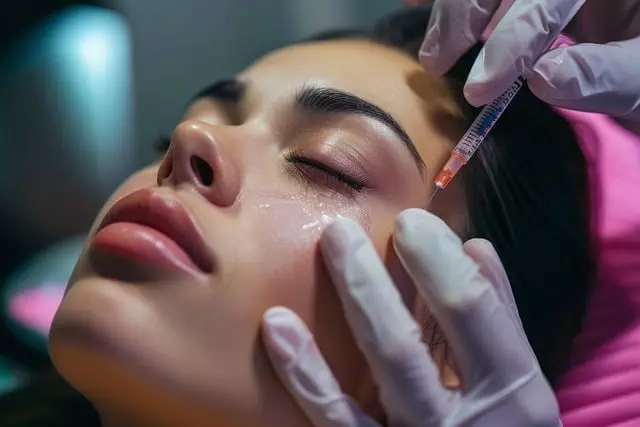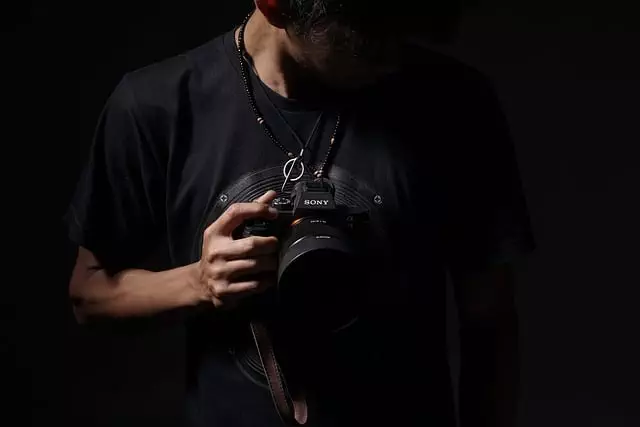Professional Botox treatments and Dermal fillers offer effective solutions for wrinkle reduction, each with unique benefits. Botox targets dynamic wrinkles caused by facial expressions, providing 3-6 months of results, while dermal fillers enhance skin volume and texture for longer-lasting effects. Safety considerations include temporary side effects like bruising and headaches for Botox, and redness/swelling for fillers. Cost varies, with Botox generally more affordable for smaller areas, while fillers can range up to $2000 per session. Both treatments require consultation with qualified specialists to discuss goals and risks.
“Uncover the secrets to youthful skin with a comprehensive guide to two popular wrinkle-busting treatments. From the precise mechanics of professional Botox injections to the versatile world of dermal fillers, we explore which solution excels in specific scenarios.
Learn about the benefits of Botox, its safety profile, and cost considerations while uncovering diverse dermal filler types and their impact on skin texture. Expert tips and real patient stories will empower you to make an informed decision for your skincare journey.”
Understanding Botox: A Professional's Guide to Its Mechanism and Benefits

Botox, a popular and effective treatment for wrinkles, is a protein produced by bacteria that, when injected into specific muscles, causes them to relax. This action prevents the contraction that forms lines and creases on the skin’s surface over time. Professional Botox treatments are highly precise, targeting problem areas with minimal discomfort and downtime. The results can last for several months, offering a long-term solution to combat dynamic wrinkles caused by facial expressions.
For individuals seeking a non-surgical approach to skincare, Botox is a game-changer. It’s important to note that its benefits extend beyond aesthetics; it also prevents the deepening of existing lines and can enhance overall skin health. As a professional guide to Botox treatments reveals, this procedure is not just about smoothing out fine lines but also about achieving a more youthful appearance naturally and safely.
Unveiling Dermal Fillers: Types, Applications, and Results

Dermal fillers are a popular choice for those seeking to enhance their skin’s appearance, particularly in the fight against wrinkles and loss of volume. These injectable treatments offer a temporary yet effective solution by plumping up the skin and reducing the depth of fine lines and wrinkles. There are various types of dermal fillers available, each with unique properties and applications. Common ingredients include hyaluronic acid, collagen, and poly-L-lactic acid (PLLA), each providing different levels of lift and hydration.
When it comes to professional Botox treatments, dermatologists and aesthetic specialists carefully select the appropriate filler based on the patient’s needs and skin type. Hyaluronic acid fillers are popular for their immediate results and ability to attract moisture to the skin, while collagen stimulators can prompt the body to produce its own collagen, offering a more prolonged effect. The choice between Botox and dermal fillers often depends on the patient’s specific concerns, desired outcome, and the expertise of the treating professional.
Comparing Effectiveness: When Is Botox the Better Choice?

When comparing Botox for wrinkles to dermal fillers, understanding the strengths and weaknesses of each treatment is crucial. Professional Botox treatments are particularly effective for dynamic wrinkles—those caused by facial expressions like frowning or squinting. It works by blocking nerve signals that cause muscle contractions, thereby reducing the appearance of lines and wrinkles over time.
Botox is often the better choice when fine lines and crow’s feet are the primary concern, as it offers a more specialized solution for specific areas. Its effects typically last between 3 to 6 months, providing a manageable treatment interval. However, Botox may not be ideal for deeper, static wrinkles or those seeking immediate, longer-lasting results, as dermal fillers can offer a faster and more prolonged solution.
Safety and Side Effects: A Comprehensive Look at Both Treatments

Both Botox and dermal fillers are popular non-surgical cosmetic procedures, but they come with distinct characteristics and considerations, especially when it comes to safety and side effects. Professional Botox treatments involve injecting a neurotoxin that relaxes muscles, reducing dynamic wrinkles, particularly around the eyes and mouth. While generally safe when administered by a qualified professional, potential side effects include temporary bruising, swelling, or headaches. In rare cases, botulism may occur if the toxin spreads beyond the injection site.
On the other hand, dermal fillers enhance skin volume and texture by injecting hyaluronic acid or other substances into the dermis. These treatments are generally safe but carry a higher risk of side effects like redness, swelling, and discomfort at the injection site. In some cases, asymmetry, excess skin lumps, or an unnatural look may occur, requiring touch-up injections or corrective procedures. It’s crucial to consult with a board-certified dermatologist or aesthetic specialist to understand the specific risks and benefits associated with each treatment based on your individual needs and medical history.
Cost Analysis: Budgeting for Professional Botox vs. Dermal Fillers

When considering cosmetic procedures for addressing wrinkles, one of the primary factors that influences a patient’s decision is cost. Both Professional Botox treatments and dermal fillers have varying price points depending on several factors, including the area being treated, the volume of product used, and the expertise of the practitioner. On average, Botox treatments tend to be more affordable for smaller, localized areas like forehead lines or crow’s feet compared to dermal fillers, which are often more expensive due to their ability to enhance larger surfaces of the face.
Botox typically costs between $200 to $500 per treatment session, with results lasting 3-6 months. Dermal fillers, depending on the type and quantity used, can range from $400 to $2000 or more per session, offering longer-lasting results (up to 2 years). It’s essential for individuals to research local practitioners, compare prices, and inquire about package deals or promotions to ensure they stay within their budget while achieving the desired aesthetic outcomes.
Patient Testimonials: Real-Life Experiences with Wrinkle Reduction Therapies

Many patients seeking wrinkle reduction therapies turn to professional Botox treatments, citing real-life experiences that speak volumes about their effectiveness. These individuals often share stories of significant improvements in skin texture and appearance after just a few sessions. They note how the procedure not only reduces fine lines and wrinkles but also enhances overall facial contouring, providing a more youthful and refreshed look.
Patient testimonials highlight the safety and comfort associated with professional Botox treatments. Many express relief at the minimal downtime and quick recovery period, allowing them to resume their daily activities without significant interruption. The consistent results, as described by satisfied patients, further underscore the reliability of Botox as a go-to solution for wrinkle reduction, making it a popular choice in the aesthetics industry.
Choosing the Right Treatment Plan: Tips from Dermatology Experts

When deciding between Botox and dermal fillers for addressing skin concerns, it’s crucial to consult with dermatology experts. They emphasize that the best approach depends on individual needs, skin type, and desired outcomes. “Professional Botox treatments” are particularly effective for smoothing fine lines and wrinkles, especially around the eyes and forehead. However, they offer temporary results, typically lasting 3-6 months, necessitating regular sessions.
Dermal fillers, on the other hand, provide instant volume restoration and can last from 6 months to several years. Experts recommend this option for individuals seeking more dramatic anti-aging effects or immediate improvements in facial contours. Before choosing, patients should discuss their expectations, potential risks, and recovery periods with a qualified dermatologist.
